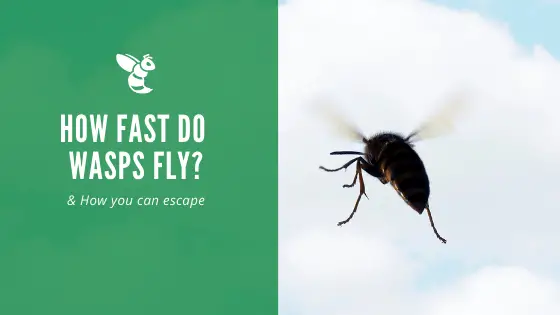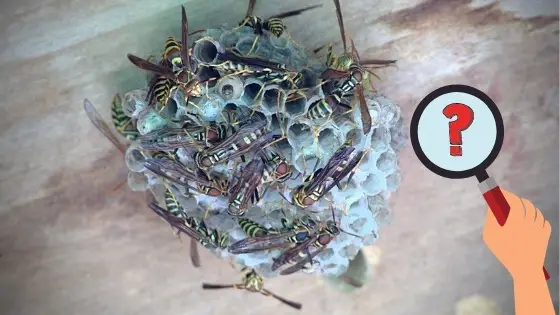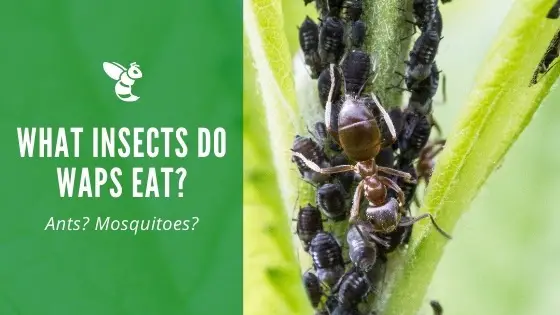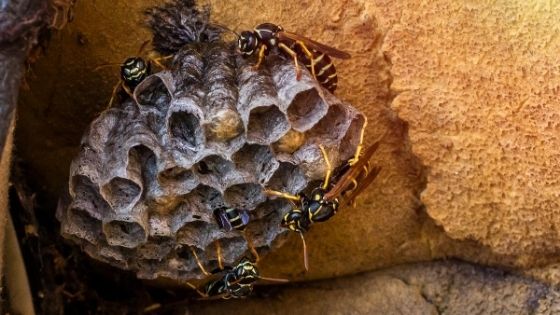How Fast Can a Wasp Fly?

Insects that sting humans are some of the most feared insects in the world. While many insects are located in climates and habitats that aren’t commonly frequented by us, there are varieties that you’ll find in your backyard.
For example, wasps can make their nests in your bushes, in trees, and under the eaves of your house. They can even make their way indoors if they find it necessary. If you find yourself in a location where a wasp nest is nearby, you may encounter some angry wasps trying to defend their territory.
Can you outrun a wasp? How fast do wasps fly? These are commonly asked questions that we’re going to shed some light on.
How do Wasps Fly?
Like other insects of its type, wasps have a strong set of wings. They are difficult to see when the wasp is in motion, but try to catch a glimpse of their wings when they have landed on a plant or object in your yard.
Their wings are positioned on their body so that they are folded down over their backs. They may even have multiple sets of wings, depending on their species. Their wings move very fast when in motion (up to 400 times per second), and they will generate enough wind to lift their bodies along the way.
Wasps are strong fliers, so they keep up with strong winds, fans, etc. They may even attempt to sting you multiple times, so it’s a good idea to keep away from them as much as you can.
The fastest wasp in the world is still a bit slower than some hornets and other insects, but you can expect them to fly in a strong, straight path in your direction if they find the need to.
Can You Outrun a Wasp?
Wasps tend to be pretty quick, but they’re not necessarily the fastest stinging insect out there. Your average bee will be able to fly at a pace of about 12 to 20 miles per hour.
Hornets are the fastest at 25 miles per hour. Different wasps species can vary in speed, but they tend to fly around 6 to 20 miles per hour. While some of the top runners in the world can get into the 20 miles per hour category, your average person isn’t going to easily outrun a wasp when they’re extremely mad.
If you’re in the process of exterminating a wasp nest and they start to get agitated, your best bet is to get inside as soon as possible. Head towards the nearest entrance to your home, and you may be able to get out of their way before they can sting you.
Why Do Wasps Chase You?
A wasp will chase you and try to sting you if they feel that you are a threat. Wasps are very persistent, so they’re not going to leave you alone until they feel that you are far enough away from their nest and colony.
If you keep coming back to the area where you first encountered the wasps, they’re only going to get more aggressive. Try to remove yourself from the situation as quickly as you can. Once you’re gone, avoid going back to that area for a little while.
The wasp’s senses are heightened after your first visit with them. If you have to go back through that area, protect your skin with clothing that prevents wasps from landing on you or stinging you.
How Far Will a Wasp Chase You?
Heading for the house and wondering how long that wasp is going to stay on your tail? Wasps aren’t likely to travel further than 50 to 100 feet away from the original point of contact. If you’re going to spray a wasp nest or be in its vicinity, make sure that you know where you can head for safety. Try to come up with a space that’s as close as possible.
Conclusion
We hope that you’ve jotted down some notes on how fast these wasps can fly. The next time you find yourself in their company, you can think about your best escape plan. Wasps can be beneficial for your landscape and nature, but humans and wasps can find it challenging to intermingle in the same habitat.
If they’re located in an area where you can’t physically stay away from, think about having a professional remove the nest safely for you. You may be able to take on the process of exterminating the nest on your own if you’re careful.
The evening hours are the best time to target the nest as the wasps start to calm down for the night. This is also the time when most wasps will be inside of the nest. You’ll be able to get rid of more of them at once with this method.



